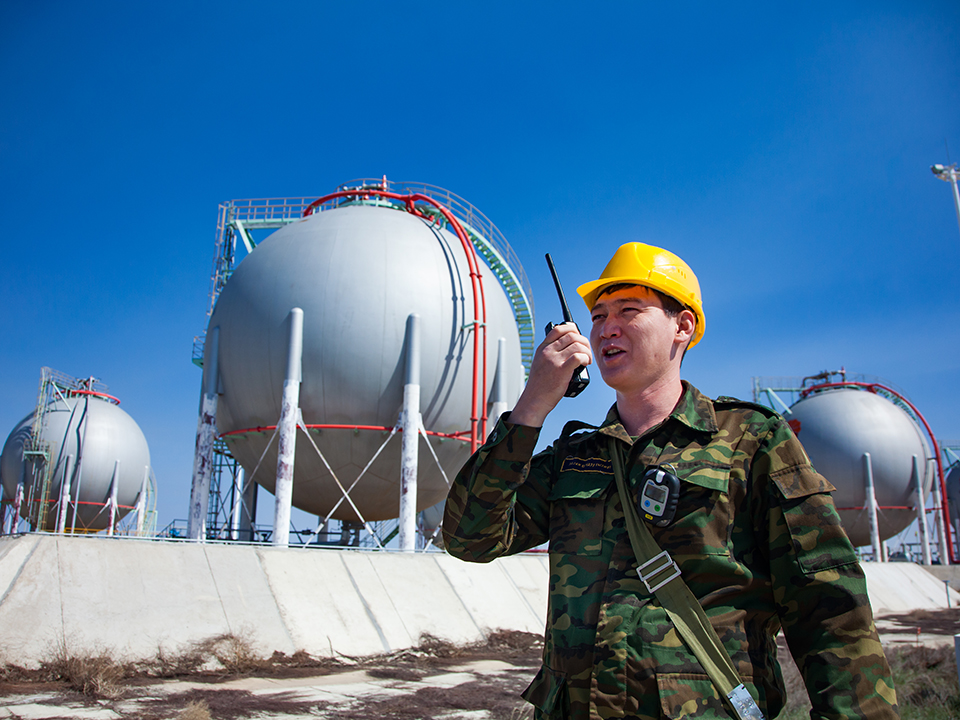Pandemic Diplomacy: China’s Role in Central Asia in the Era of Covid-19
The Central Asian economies have suffered the consequences of the global pandemic over the past two years. Dependence on commodities and export-led growth models, as well as the crash in remittances from migrant labor in Russia, damaged the major economic pillars of many of the Central Asian countries. The risks of excessive reliance on oil and energy exports to China and Russia was also laid bare as demand plummeted, undermining the region’s economic health and political stability. As the widespread protests in the country in January 2022 indicated, this is especially true for Kazakhstan, where the legitimacy of the government relies strongly on economic performance and the ability of the state to sustain the population’s economic and social needs.
The state of affairs in Central Asia provides opportunities for both the rising superpower (China) and the ‘besieged fortress’ (Russia) to consolidate their influence over the foreign and domestic policies of Central Asian countries. China is undoubtedly the largest power in the region in both geoeconomic and geopolitical terms. The Belt and Road Initiative, which was launched in Kazakhstan in 2013, is an attempt to link economic and political systems across the region to provide essential diversification of export routes to the EU and Caspian regions. At the same time, Russia regards the Central Asian states as its “Near Abroad,” its sphere of influence.
Pandemic Diplomacy and Sinophobia in Central Asia
Both Russia and China have used the pandemic to extend their influence via pandemic diplomacy. However, in most regions of the world the perceived nature of this humanitarian aid has attracted criticism and suspicion. When China sent facemasks, PPE and expert medical advice to heavily affected countries of Europe, such as Italy, journalists revealed that Chinese medical assistance is not being properly scrutinized and licensed. Another popular assumption was that medical staff were covert intelligence officers that use public health emergency as an opportunity to gather information. European media outlets and officials repeatedly accused the Russian media of “spreading fake information” about the pandemic and even compared them to ‘bad Samaritans.’ This highlights the principal difference between their policies; Russia seeks ‘disruption’ and uses every available information source as a ‘tool of confrontation’ with the West, while China that seeks ‘stability’ to enhance its position.
In Central Asia, China’s so-called facemask diplomacy is widely seen as an opportunity for it to demonstrate its claim to be a great power with global presence. In Kazakhstan alone, Chinese humanitarian aid amounted to $10 million in 2020, more than a half of all humanitarian aid received that year. The first Chinese humanitarian cargo arrived at Almaty airport on April 2, 2020. These included thermometers, test kits, disposable protective equipment and medical clothing. On April 4, another humanitarian aid delivery from China arrived in Aktobe with 720,000 masks and 3,000 protective suits. Later, a special group from China flew to Nur-Sultan with ventilation devices and four tons of medical products accompanied by 10 Chinese doctors. On April 10, cargo sponsored by Chinese billionaire Jack Ma, including 500,000 medical masks, 5,000 protective suits and 50,000 pairs of medical gloves arrived. On April 24, a medical cargo from Urumqi was delivered to Nur-Sultan by a special board of the Ministry of Defense of the Republic of Kazakhstan carrying 130,000 medical masks, 10,000 thousand gloves, thermometers and special protective clothing supplied by different Chinese provinces, government agencies and companies. In early May, the Jack Ma foundations and the Alibaba Group sent a second batch of humanitarian aid to Kazakhstanis in the form of test kits (50,016 pieces) and artificial lung ventilation devices (30 pieces). The last dedicated medical aid arrived on July 5; China’s government allocated 50,000 test kits, 600,000 surgical masks, 70,000 goggles, 150,000 pairs of medical gloves, and 30,000 protective gowns.
However, despite all these efforts on the part of China, the pandemic has amplified processes of ‘othering’ and exposed deep-rooted racism against everything “Chinese” in Central Asia. None of the Central Asian powers have pointed to China as the source of their initial infections. However, the rapid spread of “Chinese” or “Wuhan” virus and its dire economic consequences, coupled with severe limitations of social activities, rekindled Sinophobia that was already the part of popular discourse in the region.
The spread of Sinophobia intensified after the notification for Turkmenistan and Kazakhstan in March 2020 that China would significantly decrease the amount of imported gas due to a broader slowdown in the Chinese economy. Shortly after, an article on the Chinese website (sohu.com) suggested that most of the China’s neighbors in Central Asia “want to return” to China. This resulted in the highly unusual summons of the Chinese ambassador to Kazakhstan to express the government’s protest. While it was obviously fake, the article provided another reason to express racial prejudices towards China. The narratives about China that are voiced by the activists are reminiscent of Soviet propaganda about the Western imperialist expansion – exploitation of resources without the consent or approval of local authorities, coupled with environmental destruction. Polling data published in Central Asia Barometer suggests that that both the US and China are held in low regard by Central Asians, while Russia is regarded as country to admire.
Economic factors also drive Sinophobia. Most countries of the region suffer from high unemployment rates, especially among young people, fueling the fear that the immense demographic potential of Chinese migrants will overwhelm and destroy national labor markets. The fact that Chinese-led companies and infrastructure projects provide employment opportunities to locals does not counter Sinophobia; on the contrary, it creates the image of Chinese workers as top managers or “oppressors/exploiters” and workers from Central Asia as “oppressed/exploited.” The actual number of the jobs created is unknown, however, the estimated number in Kazakhstan is 5,000 with the prospect of 20,000 by 2024. Importantly, all Central Asian states have quotas for both the employment in Chinese-led companies and Chinese specialist immigrants.
For China, this topic remains sensitive. Foreign Minister Wang Yi, in his address to the SCO representatives in September 2020, emphasized the need “to oppose any attempt to politicize the pandemic and attach a geographical label to the virus.” This statement was repeated during the second “China+Central Asia” Foreign Ministers’ Meeting in May, 2021.
However, China has one major advantage. The economic dilemma that Covid-19 has created is more likely to be solved with the help of Beijing than Moscow. Therefore, the objective economic factors of post-pandemic recession and restoration will tie the Central Asian economies closer to China and in increasingly innovative ways.
Pandemic Politics and International Cooperation
Before the pandemic, China preferred to deal with the Central Asian governments bilaterally, while Russia preferred to work through the Eurasian Economic Union, splitting the region between members (Kazakhstan and the Kyrgyz Republic) and non-members (Tajikistan, Turkmenistan and Uzbekistan). This initial difference benefited China as the pandemic disrupted multilateral and regional cooperation, leaving bilateral cooperation relatively intact. However, answering the rise of anti-China sentiments, Chinese government diversified the sources of pandemic aid, sending them through regional organizations and associated international companies.
The SCO remains a tool for Chinese investment in the region. This approach proved to be effective for the organization’s development, which demonstrated desire to provide support to its members (using China’s active position in pandemic diplomacy). The SCO has also played its role in connecting the region with public-private Chinese projects. On March 22, 2020, SCO Secretary General Vladimir Norov wrote a letter to remote learning firm Weidong Cloud Education, praising the efforts of the company to provide information about the disease, which was followed by the visit of the Weidong Group’s President to the SCO Secretariat on 10 April, 2020. This was followed by the SCO co-hosting a medical seminar with Alibaba to connect Chinese doctors from the First Affiliated Hospital of Wenzhou Medical University with their SCO counterparts promoting “the digital response to Covid-19” program by Alibaba Group.
This cooperation marks the extension of Chinese-led “Digital Silk Road” beyond governance and infrastructure projects. The CEO of Alibaba Jack Ma become the unofficial representative of the Chinese humanitarian aid in the region. Exploiting the fact that Alibaba’s sites are responsible for the majority of the small-scale exports from China into the Central Asia, Jack Ma’s action provided legitimization for potential Chinese investments.
China’s ambitions in the region include creating a universally accepted digital currency (AliPay, WeChat Pay) that will not only move Chinese economic influence closer to the borders of the EU, but also provide SCO members with access to restricted markets in South-East Asia. The decision to use Alibaba as the “spearhead” of Chinese economic expansion is, in part, an effort to avoid Sinophobia. The private imports from China in the form of purchases from Alibaba are difficult to estimate, since most of them do not apply for taxes or custom duties. The approximate values by the Trade Map specify that the private small-scale imports increased for more than 300% in 2020.
Digitalization and Internalization of National Security
Another opportunity afforded to China as a result of the pandemic is the shift it has caused among governments in Central Asia towards internal aspects of the national security. This has prompted the Central Asian governments to import and install surveillance technologies. These imports have primarily come from China as the part of the Digital Silk Road initiative. While the initial motivation was to enhance public safety, the pandemic provided conditions for their wider application.
During the pandemic, many of civil and political rights were suspended for indefinite periods. While some expressed concerns about long-term effects of such extraordinary policies, for the most part their implementation was received with strong public support. Desire to have more effective mechanisms for controlling the spread of the disease will contribute further to the agendas of states that design surveillance system and actively implement them as the governmental policy. “Great neighbors” of the Central Asian states – Russia and China excel at thee aspects of authoritarian digital governance.
President Tokayev expressed his willingness to follow China’s example and deepen the collection of citizens’ personal identification information. In his address during his visit of HikVision Digital Technology Company he especially noted Chinese progress in areas such facial recognition, the usage of biometric and medical data, and the collection of employment and credit history. This information would give the government the ability to track its citizens at any social level.
As Niva Yau noted, “(surveillance) is a fundamental technology, and the governments of Central Asia rely entirely on China. This means that in the coming years, the Central Asian countries will have to continue to buy from China, without the ability to control their own technologies and develop their own rules.” This nexus of the increasing economic, political and technological dependence on China had Central Asian states seeking, but not finding, ways to diversify international cooperation.
Conclusion
The pandemic aspect of regional politics in Central Asia increasingly becomes “one-man show” of China’s economic and political expansion. For China virus has merely opened up new opportunities in the Central Asia as the economic situation in the region rapidly deteriorated. While the prospects of the economic dependence are becoming ever more real, the existing cultural tensions will be the source of social instability.
While Russia still exerts huge amount of “soft power” in the region, controlling the media sphere, economic potential of China allows it to rip the benefits of the coronavirus crisis. Russia is still a dominant player in many domains such as security (Collective Security Treaty Organization), culture (mass media control) and ethnic policy, but China increases it influence at the ever-growing rate.
The only real alternative for the Central Asian countries to answer this threat of hegemonic economic control is regional cooperation. However, the existing differences in national interests between the countries, as well as continuous battle for the leadership in the region (Kazakhstan vs. Uzbekistan) are undermining the prospects of political and economic unification. Thus, China will probably emerge the dominant external force in the post-Covid period. The potential problem is that Russia may not take it as the new status-quo and deploy its vast “soft power” potential to radicalize Sinophobic prejudices.
The public image of Chinese activities in Central Asia has little to do with its long-term plans for the region. However, the persistent inability of local governments to explain Chinese initiatives may lead to social ruptures, as Sinophobic publics are increasingly pitted against their Beijing-aligned governments in the wake of the growing economic and political influence of the Asian superpower.
Miras Zhiyenbayev is Research Assistant at the Faculty of World Economy and International Affairs / Centre for Comprehensive European and International Studies (CCEIS) at the National Research University Higher School of Economics in Moscow.




